080718_YKMV10.pdf







August 7, 2018 • Page 10
shop online at www.missourivalleyshopper.com
EPA Must Live Up To Its Promise
To Provide Certainty To Farmers
By Sen. Mike Rounds
I recently had the opportunity to
question Acting Environmental Protection Agency (EPA) Administrator Andrew Wheeler about a number of issues
important to our farming community.
Particularly, I am concerned about recent action the EPA has taken related to
the Renewable Fuel Standard (RFS) and
the impact those actions could have on
our corn and ethanol producers.
Passed in 2005 and expanded in 2007,
the RFS is one of the most significant actions the federal government has taken
on behalf of rural America in more than
50 years. It requires transportation fuel
in the United States to contain a minimum volume of renewable fuels such as
corn ethanol. Administrated by the EPA,
compliance is tracked through a Renewable Identification Number (RIN) system
and requires a minimum of 15 billion
gallons of conventional biofuels, like
ethanol, to be blended annually.
The RFS has provided the statutory certainty necessary for the corn
industry to grow and thrive, and as a
result corn ethanol has become a vital
component of our nation’s fuel supply.
The explosion of corn ethanol production has directly helped our farmers,
bolstered American energy independence and created thousands of jobs.
However, it was recently reported that
the EPA is providing RFS waivers to
small refineries, thereby reducing the
amount of ethanol required by the RFS
and reducing the demand on corn and
corn ethanol.
During a recent Environment and
Public Works (EPW) Committee hearing,
I had the opportunity to ask Acting Administrator Wheeler about these waiv-
State Historical Society
Releases Wilder Autobiography
“Pioneer Girl” As E-Book
the No. 2 slot on the New York Times
PIERRE, S.D.—The South Dakota
State Historical Society has released the best-seller list.
“It was a surprise success that conpopular “Pioneer Girl: The Annotated
Autobiography” as an electronic book.
Save $30 on a Summer AC Tune-Up! tinues to fascinate and engage readers,”
Tystad Koupal says. “‘Pioneer Girl: The
The e-book is part of the society’s PioAnnotated Autobiography’ is the first
neer Girl Project.
volume to explore in-depth the com“The e-book is the perfect format
Just give us a call and and readers on the go,” munities and people the Ingalls famfor researchers we’ll
ily knew and the life they lived on the
says Nancy Tystad Koupal, director of
send out a qualified
frontier.”
the Pioneer Girl Project and the South
ServiceDakota Historical Society Press. “It conTechnician like
The e-book is now available at
sdhspress.com in both Epub and Mobi
tains the numerous annotations, which
Tyler, to make sure your
formats for $29.95. All State Historical
are linked so that the reader can jump
AC unitfrom Wilder’s those to the editor’s com- Society e-books, including “Laura Ingalls
is ready for words
ments and back, along
hot summer South Dakota with the illustra- Wilder: A Writer’s Life,” also by Smith
Tyler Reiser
Hill, can be purchased online at sdhtions, maps and appendices that make
days and save $30!*
the autobiography so valuable.” Technician spress.com.
Service
More information about all Pioneer
The e-book also allows readers to ac13 years experience
Girl Project books and activities can be
cess website homepages cited throughfound online at pioneergirlproject.org or
out the text with one easy click.
In 2015, “Pioneer Girl: The Annotated by calling 605-773-6009.
Autobiography” by Laura Ingalls Wilder
and edited by Pamela Smith Hill reached
When You Want Comfort...You Want Kalins
When You Want Comfort… You Want Kalins!
Vermillion: 605-624-5618
*Rebate offer only available to Vermillion Light & Power customers.
Call for full details.
69 years as a Premier Lennox® Dealer
97 years in the Business
400 years of Heating and Cooling Experience
= Your #1 Choice in Yankton!
Yankton
Vermillion
Sioux City
605.665.4348 605.624.5618 712.252.2000
kalinsindoor.com
Participating Businesses Are…
ers. The agency has not been transparent in their process for granting these
waivers, and I was pleased to hear Mr.
Wheeler agree to work toward greater
transparency, stability and openness
moving forward.
I also reiterated to Mr. Wheeler the
importance of keeping the RFS in effect
and honoring our commitment to our
corn and ethanol producers. They have
invested billions of dollars to create
an ethanol industry and it has been a
success. Not only has it promoted the
production of significant volumes of
corn ethanol, corn ethanol has its own
unique qualities that are important to
our energy marketplace. It is used as an
oxygenate in gasoline that is even better than the oxygenates it replaced. It
is the best and cheapest octane booster
available to the oil industry today. Corn
ethanol will also help auto manufactur-
ers meet increasing CAFÉ standards,
which are regulations in place to improve the average fuel economy.
Corn ethanol production is a vital
component of the South Dakota economy. The corn ethanol industry supports
thousands of jobs in South Dakota and
contributes a significant amount of
revenue to South Dakota communities.
As we move closer to 2022, the year in
which the corn ethanol component of
the RFS is anticipated to expire, I will
continue working with the administration, my colleagues and stakeholders
to make certain the federal government
continues to live up to its promise to
producers and that corn ethanol continues to play an important role in our
nation’s fuel supply.
Tips To Consider When
Stacking And Storing
Hay This Season
BROOKINGS, S.D. - No matter what
materials hay producers choose to
bind forage with, the method of storage
throughout the summer, into the fall and
winter is important to maintaining forage quality, as well as minimizing waste
and simultaneously cost of production.
To maximize quality and minimize
waste, read on to learn some researchbased tips on forage storage put
together by Taylor Grussing, SDSU
Extension Cow/Calf Field Specialist and
Karla Hernandez, SDSU Extension Forages Field Specialist.
Factors Affecting Outside Storage
Losses
Bale Density: With dry hay (moisture
at 10-20 percent), the denser the bale,
the lower the amount of spoilage. The
density of round bales should be a minimum of 10 pounds of hay per cubic foot.
Field operations: Uniform swaths,
sized to match the recommendations of
the baler, will help produce uniform and
dense hay bales.
Reduce outdoor storage loss with
these tips: Outdoor hay storage, increased precipitation results in greater
chance for storage losses. Stacking and
storage methods noted below can help
reduce outside storage loss.
Stacking: Bales should be removed
from harvest areas as soon as possible
in order to allow for uniform regrowth
and potentially more cuttings - depending on the forage type.
Round bales that are stacked alongside harvest areas should be orientated
flat end to flat end, in north and south
rows. Stacking east and west will cause
deterioration on the north-facing surfaces if not used before next summer.
Stacks should be placed in well
drained, non-shaded areas to prevent
spoilage.
It is recommended to leave three
feet between rows to provide adequate
air flow, sun exposure for drying and
reduce excess moisture accumulation.
Reduce hay fire danger: If removing
hay from the field and stacking in a hay
yard, make sure bales are cool and dry
to eliminate any potential heating and
fire danger.
Storage: There are many storage options for hay. The more protected the
storage option, typically the greater the
expense. However, when penciling out
expenses, the price of wasted hay isn't
cheap.
Depending on how much hay is
harvested and used each year, it may
be cost effective to improve hay storage
methods.
What can be done today?
Taking current hay prices into account, last year's decreased forage production and future forage needs, storage
options may need to be re-evaluated
sooner than later.
While building a barn may not be realistic this summer, take note of current
stacking methods, and see if changes
can be made this year to decrease
waste.
In addition, document current hay
inventory (accounting for some waste)
and compare this to the winter hay
needs of the cowherd.
If additional forage needs to be
sourced, be sure to purchase quality
hay confirmed with a nutrient analysis.
Lastly, begin tracking hay waste each
year and compare the cost of wasted
hay to the cost of improving hay storage
on your farm long term.
MOODY
MOTOR
NIOBRARA, NE
Patrick Hawk
251 Spruce Ave • Box 260
Niobrara, NE 68760
www.moodymotor.com
pjhawk@hotmail.com
(402) 857-3711
(800) 745-5650
Fax (402) 857-3713
J&H
Cleaning
Services
YANKTON
WORKS
Want your REAL-TIME MESSAGE
on the most visited media website
in the Yankton area?
Join our ‘Friends2Follow’ program!
Contact your Yankton Media Representative today!
605-665-7811
Now Hiring
Herd Co, a progressive Feed Yard in
Central Nebraska has the following
Job Opportunities:
Reuse.
Repurpose.
Really Save!
Take a fresh look at the
Classifieds, the original
way to shop green!
• Assistant Cattle Manager
• Mechanic
• Mill Maintenance
• Feed Truck Drivers
• Nightshift Position
Competitive Wages. Excellent Benefits.
Call: 402-482-5931 For more information
Request Brenden or Chad
In Print and Online!
Call 665-5884
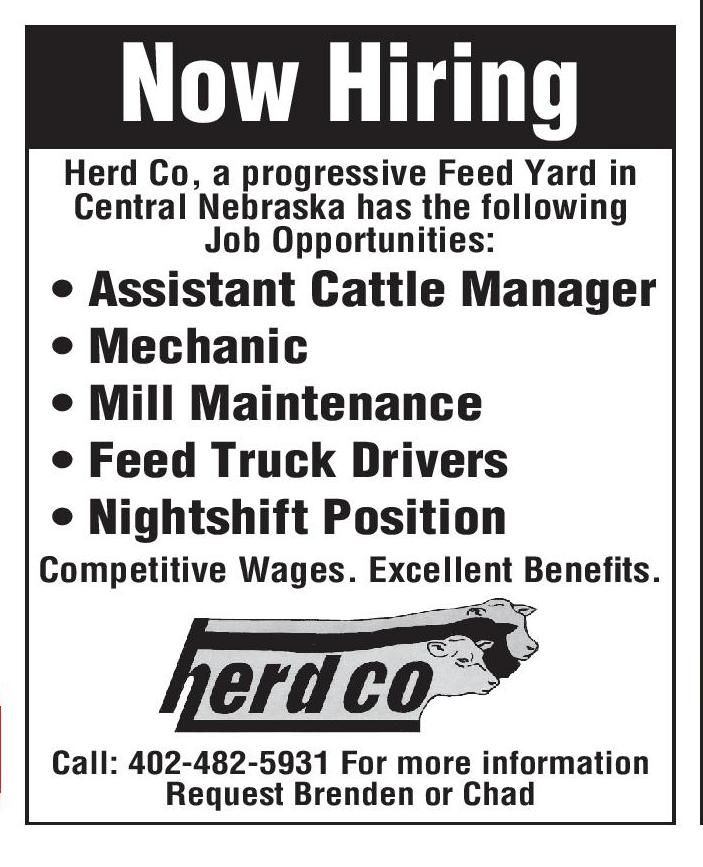





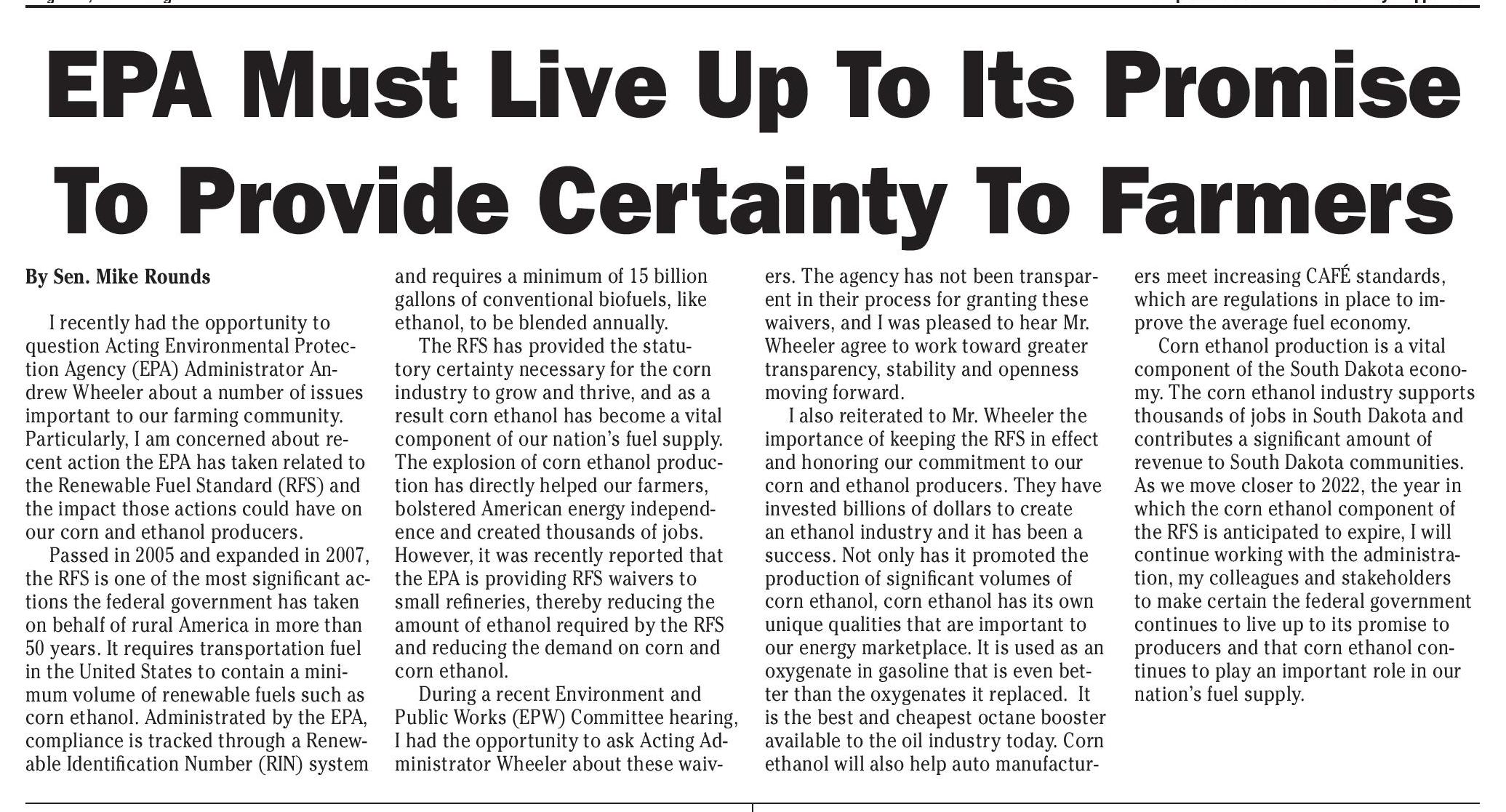


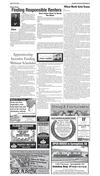

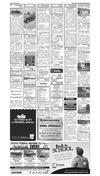
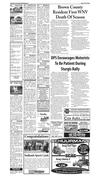


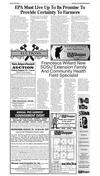
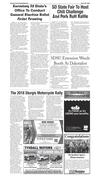


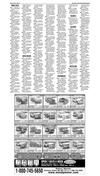
 Previous Page
Previous Page





